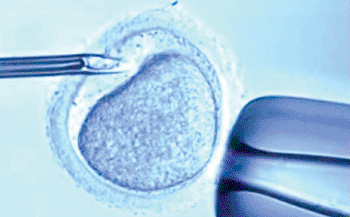Genome Sequencing Detects Defects in Human Oocytes
By LabMedica International staff writers
Posted on 30 Dec 2013
A safe, accurate, and low-cost method to select genetically normal embryos for the in vitro fertilization (IVF) procedure can increase a couple's chance of producing a healthy child.Posted on 30 Dec 2013
Through whole-genome sequencing of individual oocytes, the new method detects chromosomal abnormalities and DNA sequence variations associated with genetic disorders.

Image: In vitro fertilization of the oocyte (Photo courtesy of Dr. Geoffrey Sher).
Scientists at the Peking University (Beijing, China) collaborating with colleagues at Harvard University (Cambridge, MA, USA) demonstrated genome analyses of single human oocytes using multiple annealing and looping-based amplification cycle (MALBAC)-based sequencing technology. Various procedures are currently available to detect genetic defects in embryos prior to implantation, but these approaches are often invasive, requiring the removal of cells from the growing embryo, and do not simultaneously detect both chromosomal abnormalities and DNA sequence variations associated with genetic disorders.
The scientists developed a method for sequencing the entire genomes of polar bodies, which are cells that arise as a byproduct of egg cell division and often die later on. Because polar bodies are dispensable for human embryonic development, they can be safely removed without harming the embryo. The whole-genome sequencing methods simultaneously detect both types of defects in single human sperm cells, but until now, an analogous approach had not been applied to oocytes, even though chromosomal abnormalities are much more common in egg cells than in sperm cells.
By sequencing the first and second polar bodies, the scientists have provided proof of principle for a low-cost preimplantation genetic screening procedure of selecting fertilized eggs for transfer that are free of maternal aneuploidy and alleles associated with Mendelian diseases. The MALBAC sequencing offers improved resolution and accuracy of simultaneous detection of chromosome abnormality and heterozygous single nucleotide variants associated with Mendelian diseases.
Jie Qiao, MD, a senior author of the study said, “The new method detects chromosomal abnormalities and DNA sequence variations associated with genetic disorders. In this way, we kill two birds with one stone: one set of deep sequencing analysis to avoid two types of genetic problems. Theoretically, if this works perfectly, we will be able to double the success rate of test tube baby technology from 30% to 60% or even more.” The study was published on December 19, 2013, in the journal Cell.
Related Links:
Peking University
Harvard University














